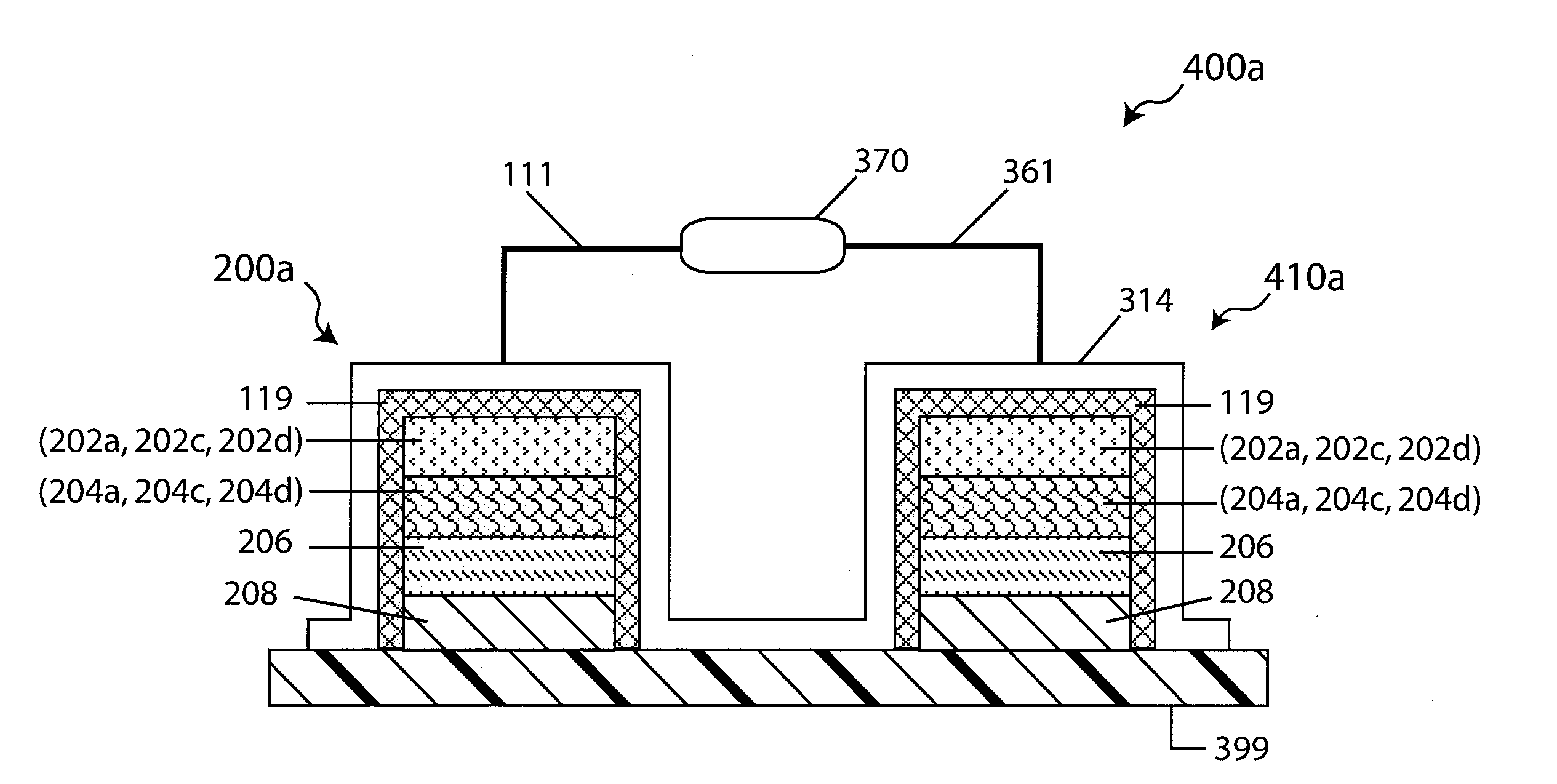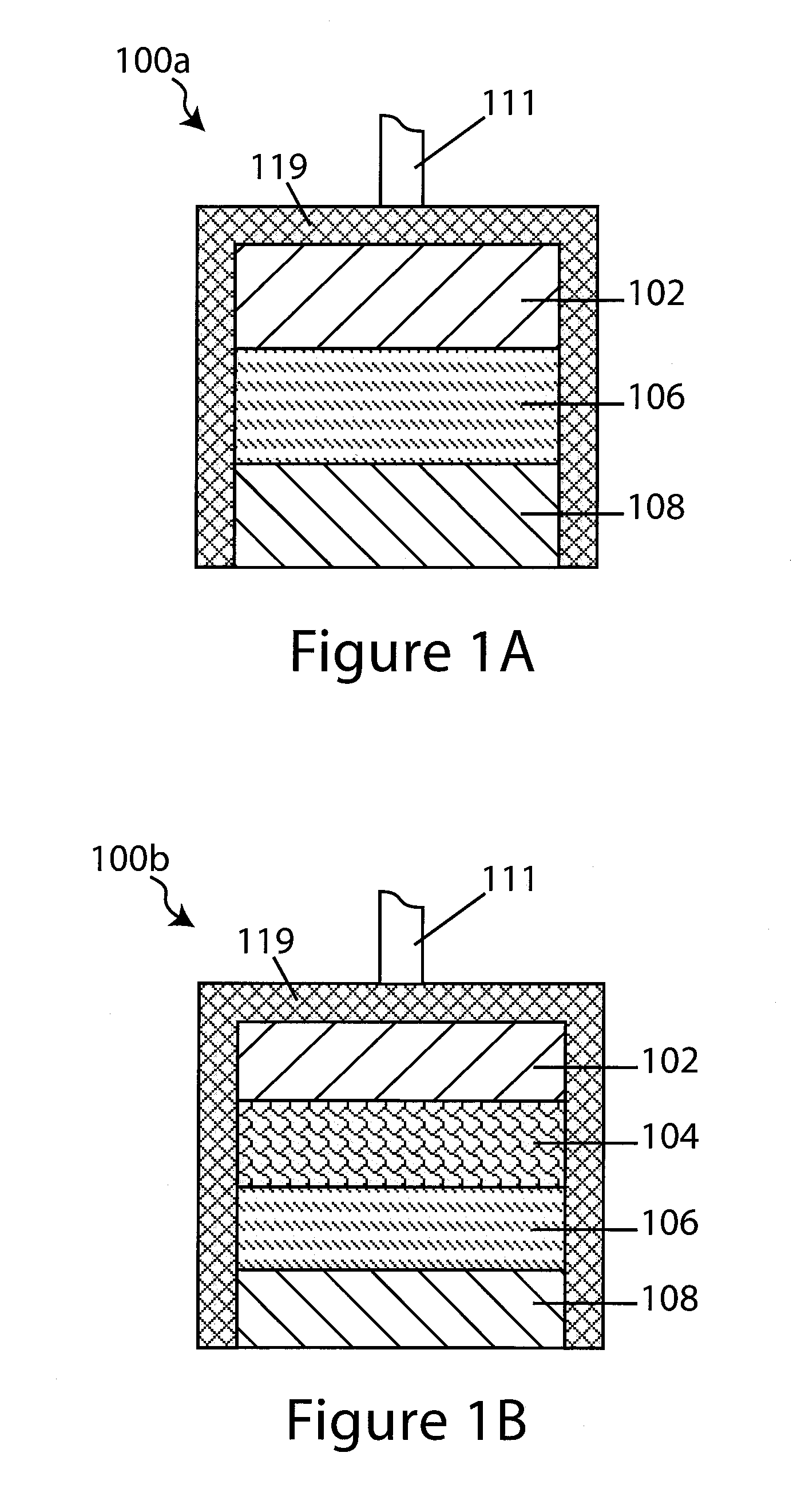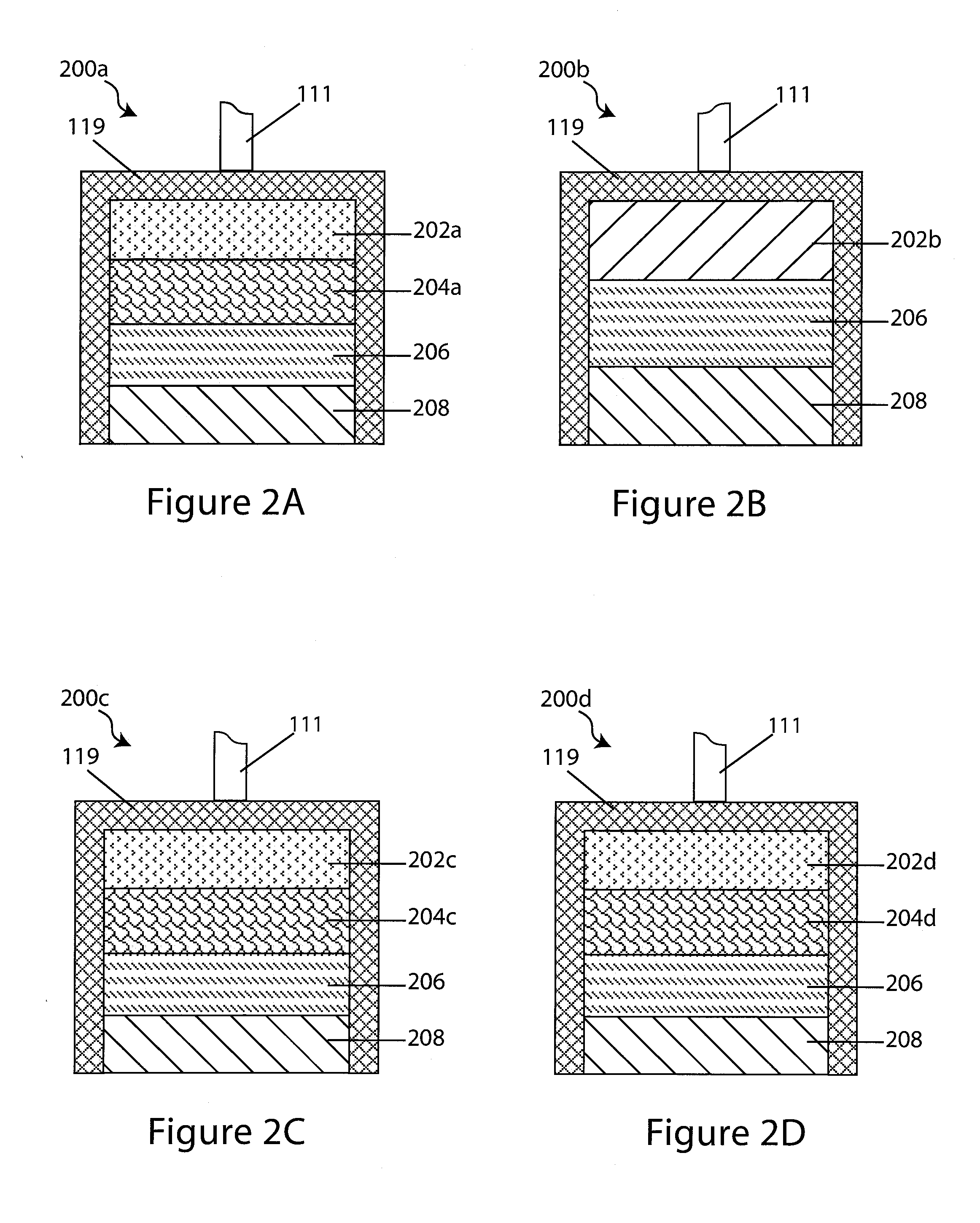Electrotransport devices, methods and drug electrode assemblies
a technology of electrotransport device and electrode assembly, which is applied in the direction of medical devices, other medical devices, therapy, etc., can solve the problems of dampening device performance and patient satisfaction, poor efficiency of electrotransport drug delivery, and ingress of undesired ions into the circulatory system of the body, so as to improve performance and enhance interfacial stability
- Summary
- Abstract
- Description
- Claims
- Application Information
AI Technical Summary
Benefits of technology
Problems solved by technology
Method used
Image
Examples
first embodiment
[0098]In a first embodiment depicted in FIG. 2A, the drug electrode assembly 200a comprises a Na+ ion (i.e., assist ion) conductive non-aqueous interlayer electrolyte 204a interposed between an “aqueous incompatible” sodium “reactive” electrode 202a, and a Na+ ion (i.e., assist ion) conducting liquid impermeable solid-state barrier layer 206. The assembly further comprises a drug reservoir 208, configured adjacent to the barrier layer and opposing the interlayer. The drug reservoir 208 stores the drug intended for delivery to the subject, and it is conductive to Na+ ions (i.e., the assist ion). Moreover, the “reactive” electrode is of the assist ion, it a sodium electrode and the assist ion of the assembly is sodium ions (Na+ ions).
second embodiment
[0099]In a second embodiment depicted in FIG. 2B, the drug electrode assembly 200b comprises an electrode 202b having a first surface, a drug reservoir 208 and a barrier layer 206 interposed between the drug reservoir 208 and the electrode 202b. The barrier layer and the drug reservoir depicted in FIG. 2B are similar to that depicted in FIG. 2A, and similar elements are similarly numbered. In a preferred embodiment, the electrode 202a is a fully solid-state inorganic sodium “reactive” electrode that forms an intimate inorganic solid-state interface with the inorganic solid-state Na+ ion conductive medium of the barrier layer 206. Moreover, the “reactive” electrode is of the assist ion, it a sodium electrode and the assist ion of the assembly is sodium ions (Na+ ions).
third embodiment
[0100]In a third embodiment depicted in FIG. 2C, the drug electrode assembly 200c comprises an “aqueous compatible”“reactive” electrode 202c that is not of the assist ion. The assembly 200c further comprises a Na+ ion conducting interlayer electrolyte 204c comprising a Na+ ion conducting electrolyte solution, which is generally aqueous though the invention is not limited as such, interposed between the barrier layer 206 and the electrode 202c. The drug reservoir 208 is as described above, adjacent to the barrier layer and opposite the interlayer 204c. The assist ion of the assembly is Na+ ions.
PUM
 Login to View More
Login to View More Abstract
Description
Claims
Application Information
 Login to View More
Login to View More - R&D
- Intellectual Property
- Life Sciences
- Materials
- Tech Scout
- Unparalleled Data Quality
- Higher Quality Content
- 60% Fewer Hallucinations
Browse by: Latest US Patents, China's latest patents, Technical Efficacy Thesaurus, Application Domain, Technology Topic, Popular Technical Reports.
© 2025 PatSnap. All rights reserved.Legal|Privacy policy|Modern Slavery Act Transparency Statement|Sitemap|About US| Contact US: help@patsnap.com



